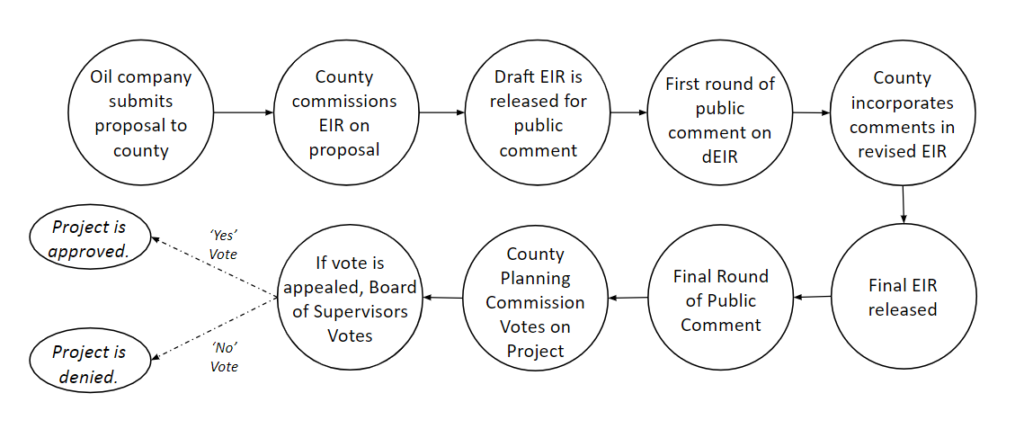The Approval Process for Energy Development
So how does all this stuff get approved (or denied)? Jurisdiction for all energy and extraction-based projects is at the level of the county. That means any new proposed projects – such as new oil wells, construction of pipelines, or expansion of oil and gas oil facilities – are overseen by Santa Barbara County, where the County’s Board of Supervisors holds the final vote.
The Board of Supervisors.
The Santa Barbara County Board is comprised of 5 members, representing the 5 districts in the county. A simple majority (at least 3 votes) is all that is required to approve, or deny, a project. The board members are:
- Das Williams – 1st District
- Gregg Hart – 2nd District
- Joan Hartmann – 3rd District
- Peter Adam – 4th District
- Steve Lavagnino – 5th District
Planning and Development.
Within the Santa Barbara County Planning and Development office, the energy division is in charge of overseeing offshore oil and gas activities, onshore facilities for offshore operations, onshore oil and gas development, surface mining, and renewable energy projects. They are ultimately in charge of commissioning Environmental Impact Reports (EIR), facilitating public outreach (including public comment), and enforcing permit requirements. They are the first stop for public comments at hearings, as well as voting (see below about the appeals process).
The Timeline.
To approve their projects, each company submits a project proposal to the County. The County’s Planning and Development Energy Division (P&D) then contracts an outside consulting firm to produce a draft Environmental Impact Report (EIR) for the project – this report is mandated to assess all of the potential environmental impacts of the project were it to be built. The draft EIR is then released for the public’s review, at which point the public may make public comment – either in person at a hearing, or by email or letter. P&D then reviews the public comments made and incorporates them to create a final EIR. Once this final EIR is submitted, the clock starts ticking. It begins a 45-day period of public review and comment, during which public hearings may be held, and the public is encouraged to contact their representative on the board of supervisors and the Energy Division’s office with their input. After this 45 day period, the supervisors vote.

The approval process for any new oil development.